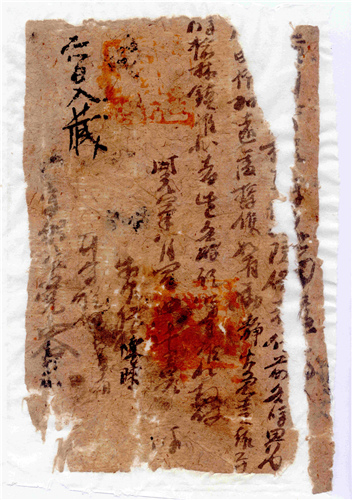 |
|
A piece of paper unearthed during the excavation project [Photo/Xinhua] |
Abundant bones of animals, such as deer, boars, swans and fish, were also unearthed, indicating that the soldiers hunted for food as their grain supplies may have been insufficient, Hu said, adding that they also grew millet themselves on nearby farmland.
Judging from the bills, letters and books unearthed, experts concluded that the soldiers were mostly from what is now the northern and northwestern parts of China.
"It may have taken them several months to arrive at the garrison site from their hometown," Hu said.
Literary works such as Classic of Filial Piety were also found among the paper documents, which Hu said contributed to the cultural spread to the western regions.
Another pastime of the soldiers was dice games. Archaeologists unearthed three dices, one of which is pottery and the other two made of bone.
"The excavation of the Kiyakkuduk beacon tower ruins not only helps us better learn about the garrison life and the military management system at the border in the Tang Dynasty, but also proves the Tang government's effective control over the western regions," Hu said.